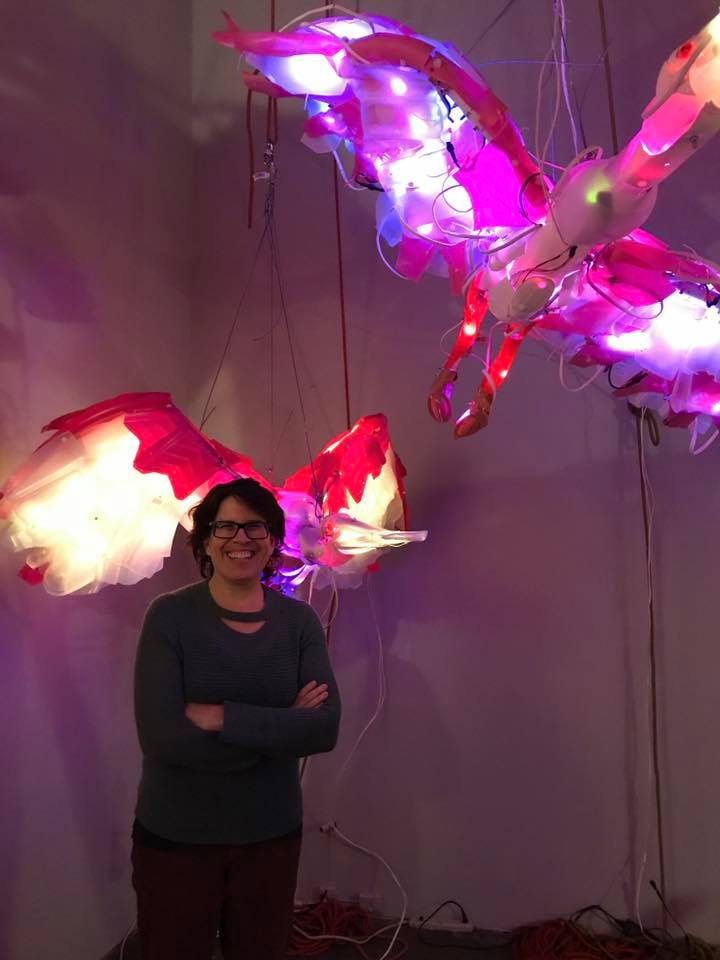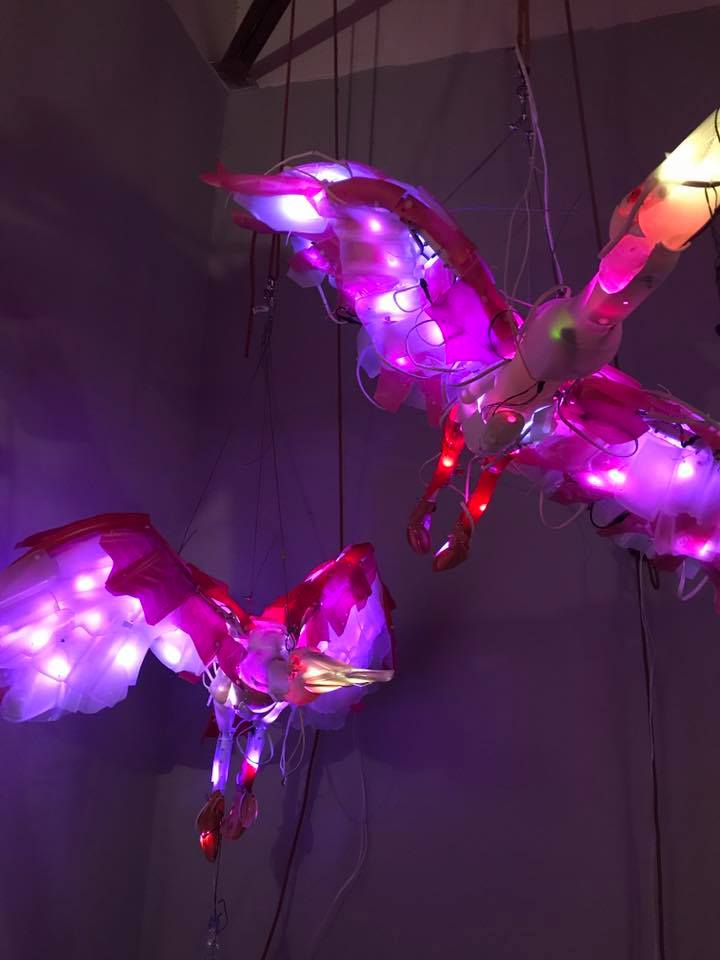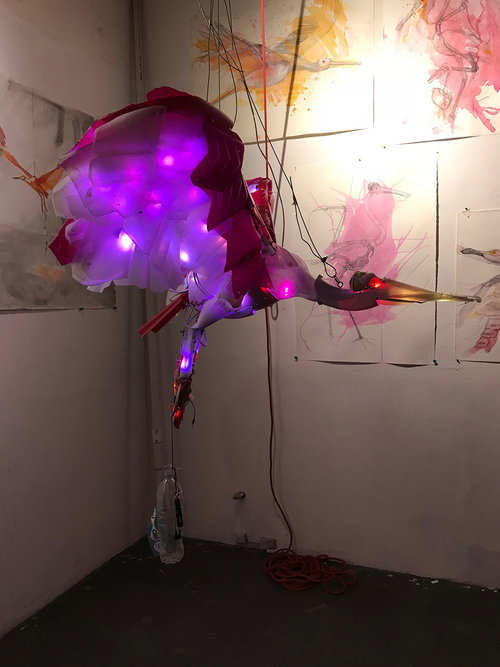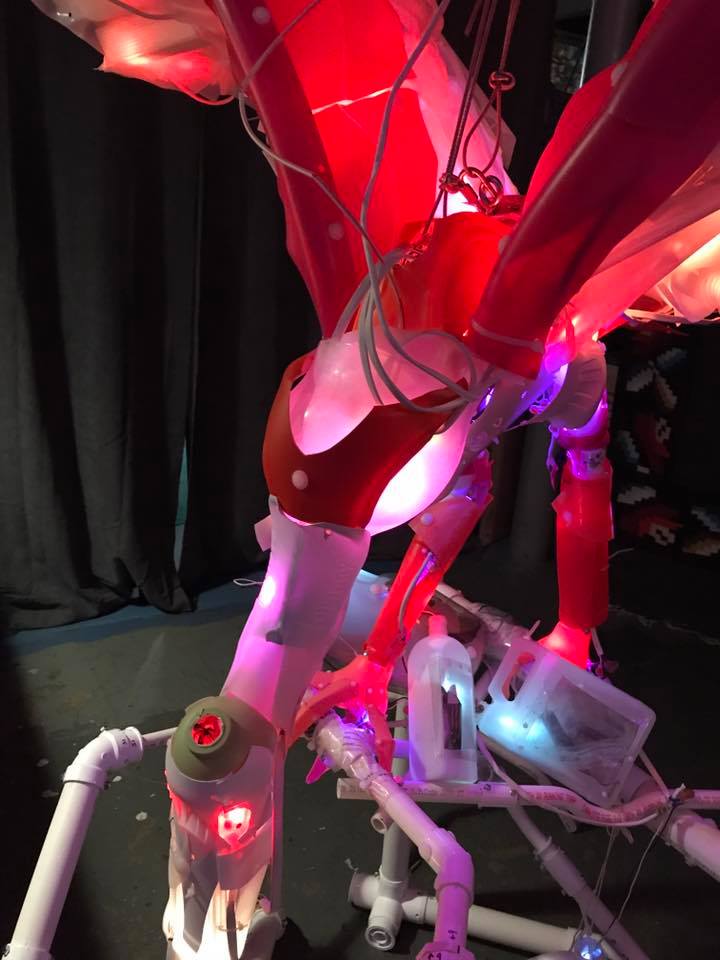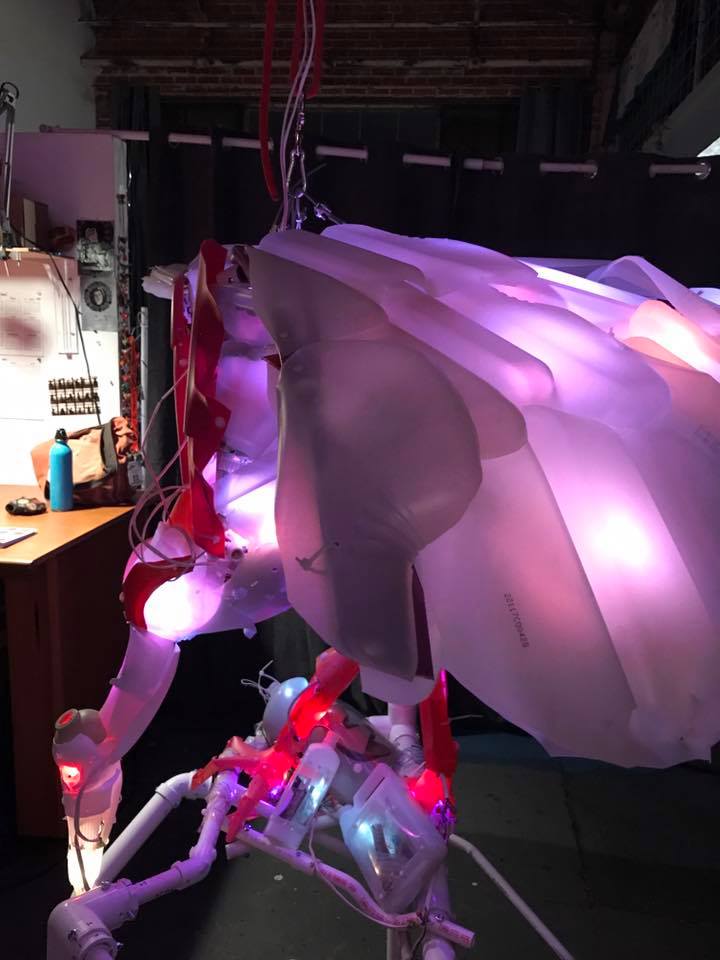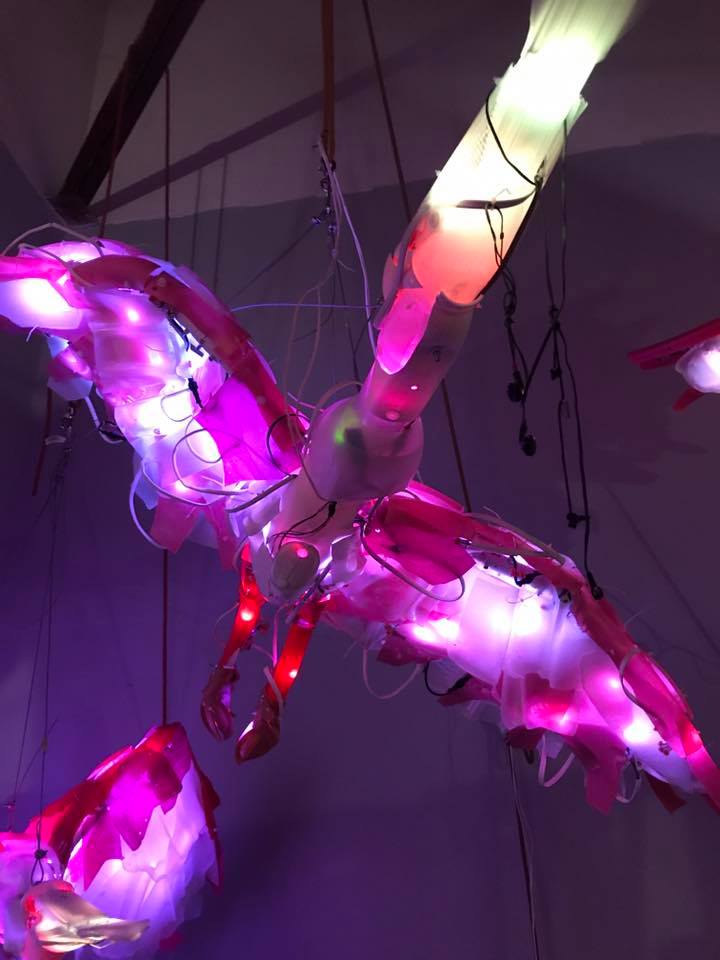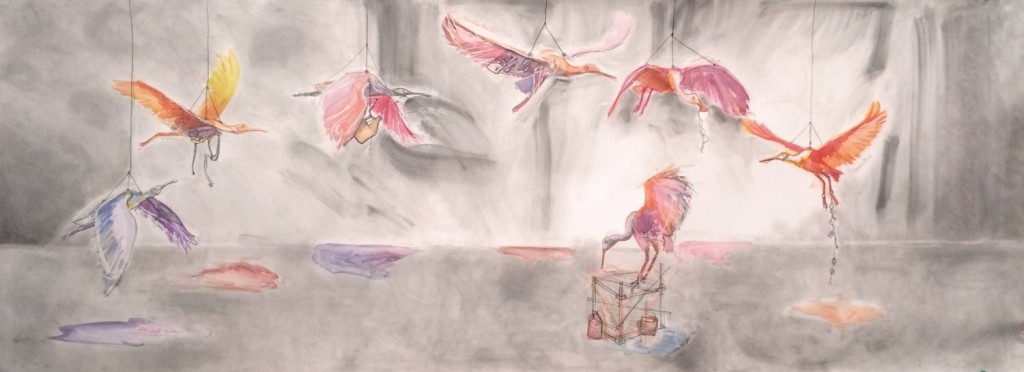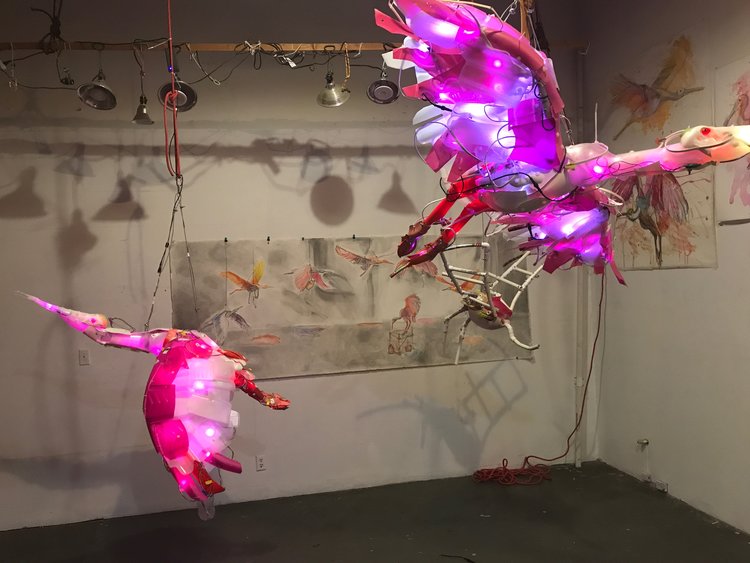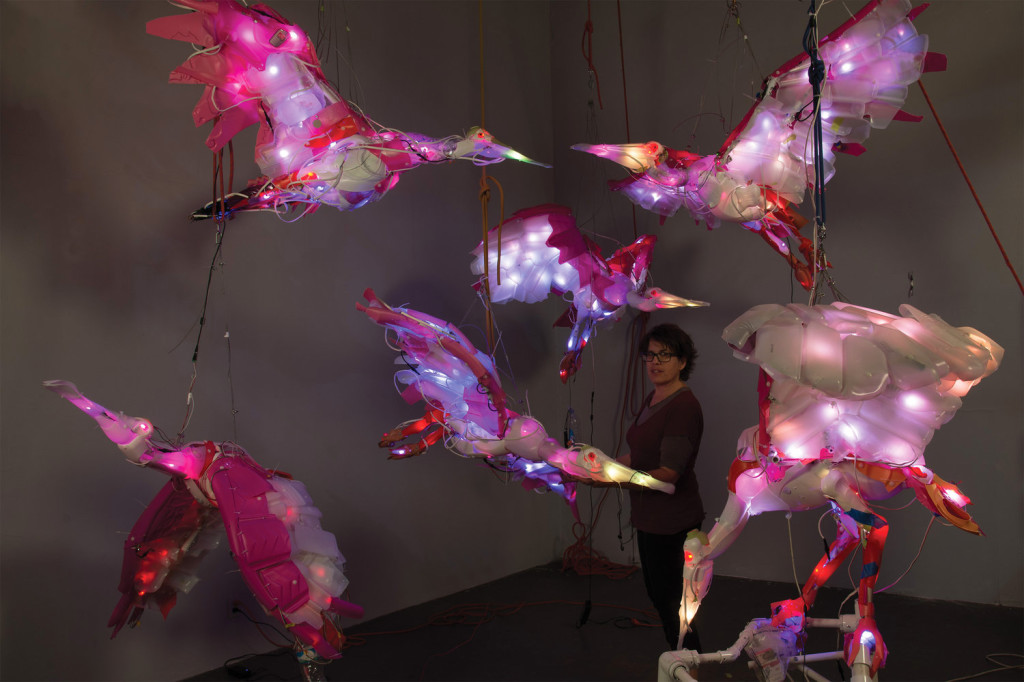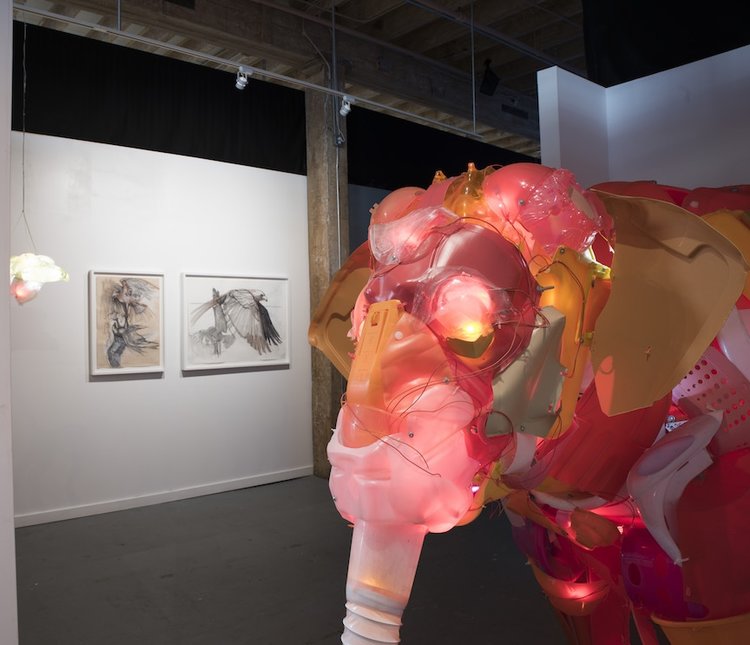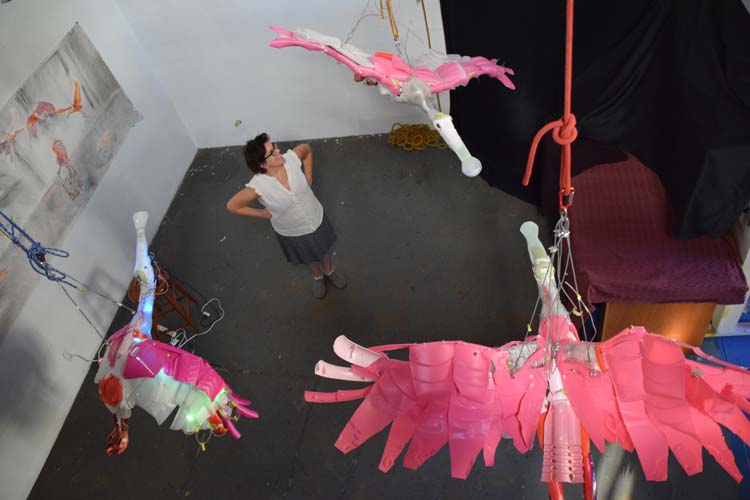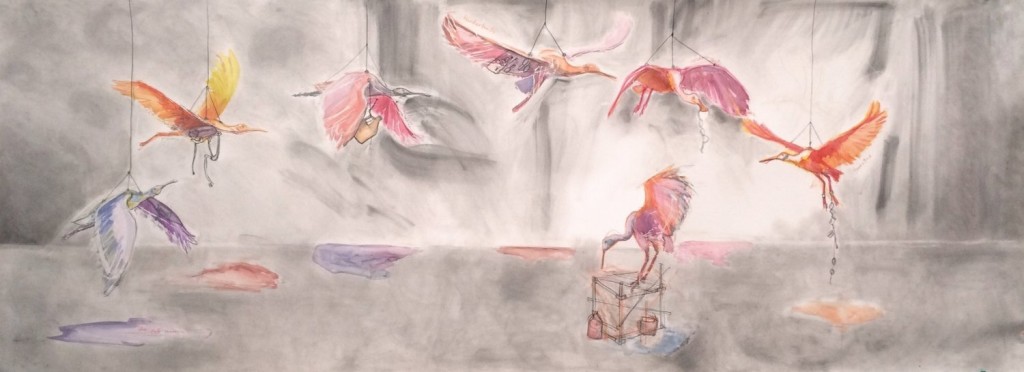Ethereal work created from the most prosaic of materials – that’s the wonderful, rich dichotomy of Cynthia Minet’s glowing new work. Crafted from recycled materials and LED lights, Minet’s has created a stunning series of six sculptures of the Roseate Spoonbill, a large bird native to the Southeast coastal region, and serving here as an artistic surrogate for human experiences.
The works, titled Migrations, are now winging their way to the International Museum of Art and Science (IMAS) in McAllen, Texas, for a show opening April 14th and running through September 2nd. Next year, in January 2019, we’ll be able to see these beauties in flight again at the Museum of Art and History (MOAH) in Lancaster.
In the meantime, Minet explains her process. “I build an armature first out of PVC based on the skeleton of the animal I am making. I find images of the skeleton and usually make a life size drawing, and then I measure bone to PVC pipe to get the proportions,” she explains.
Minet also examines photos of the animal and videos, making drawings to refer to as she builds. Once she’s ready, she cuts plastic and laundry detergent bottles which makes up much of her work materials. “I wash and remove labels, and then cut it up and piece it to represent the various parts of the animal.”
Minet has worked with materials from steel to fabrics to resin, but found the pollutant aspects of them to be difficult to work with. “The thing that is great about the plastic is that I can cut it without having to generate a lot of dust. I don’t melt it, I try to keep it as clean for my lungs as I can.”
She came upon the idea to use recycled plastic when on a trip to Italy in 2009. “I met someone who had a nightclub where they showed art work, and it was right next door to a recycling facility. I had been making these ceramic pieces based on cloning and genetic modification of animals, and the guy said do you want to do a show. I said I could do ceramics and he said, well this is a night club and those are too fragile.” He suggested using recycling materials from the facility near his club instead, and Minet was inspired. “I had just seen a show in Finland that used fiber optics, and I just had this idea of using the recycled material with lights inside them. The nightclub show in Padova, Italy never happened, but I brought those ideas back here.”
She created a one-night show at POST gallery using these materials, and then started to work from exhibit to exhibit, embracing the poignancy of using these man-made industrial materials to shape beautiful beings.
“What I’m after is capturing the essence of life, a sense of life and movement, and that’s why I try to make them so realistic but at the same time keeping the materials they are made of visible. I want to have a handle on or an edge or a recycled sign on them, something that links the material to the form.”
Minet says she is after many layers of meaning in her work. “I hope viewers will be drawn to the work by the light and the color and the form, first. Then once they are drawn in, that they will look at it, and come to a realization of what the materials are, and start to grasp the deeper ecological messages within the work. The materials are made from petrochemicals, from plastic that will never go away, and from using the electricity we are so dependent on. They’re all about dependencies in a certain way.”
The Texas exhibition came about through a solo exhibition Minet has at USC’s Fisher Museum. The museum curator was a USC alum and received press on Minet’s work and invited her to the border region.
“I found that I could move the work beyond an ecological message into a political one, to make it really relevant to all of the issues having to do with immigration that we are having to deal with right now, and link the vulnerability of the roseate spoonbill as a kind of poster child for ecological issues in the Gulf Coast region,” Minet says. “Like most of my sculptures, the animals are sort of surrogates for human experience, so I linked the vulnerability of the spoonbill to the vulnerability of people needing to cross the border.” According to the artist, “There are a lot of materials that I found along the border that were dropped by immigrants, and I incorporated those into the sculpture, because I wanted people to notice and be pointed toward that issue and the real sympathy I have to that vulnerability, and the resilience of those people in that situation.
To collect those materials, Minet visited the area along the Rio Grande border crossing with a biologist, and also met with activist and artist Scott Nicholl who provided her with materials such as Homeland Security bags, used to contain detained immigrants’ possessions.
The solo exhibition in Texas will fill a 60-foot gallery, and is site specific work that directly refers to McAllen’s position on the central flyway corridor.
“There are three different avian flyways that converge in the area, and birds migrate down to Central and South America from there,” Minet notes. “But this is really a project that speaks about both avian and human migration… it came from researching the location, and in our current political climate, looking at migratory birds, I wanted to add the specific issues there in the fascinating liminal space of the borderlands.”
Minet is intensely aware that the border is simply an imposition on the land, one that constrains not just humans but also animals in their natural migratory habitat. This dimension to her work is new for the artist; also new is a collaboration on lighting with Vaughn Hannon.
“He worked with me to create programmable LED lights and animation and color. He’s responsible for that, for the know-how on motion sensors and sound. I’ve been working with LED lights and stringing them together, but this is the first time to make programmable lighting. We saw there and made up the animation – it was like painting with the lights,” she smiles.
The glowing sculptures truly soar. Wish them well as they wing across the country to southeast Texas, and be sure to plan a visit when they make their own migration back to California again.
For more information on Minet’s Migrations, visit



